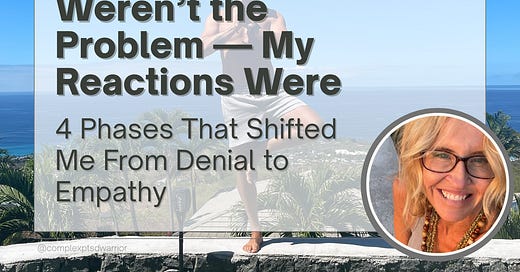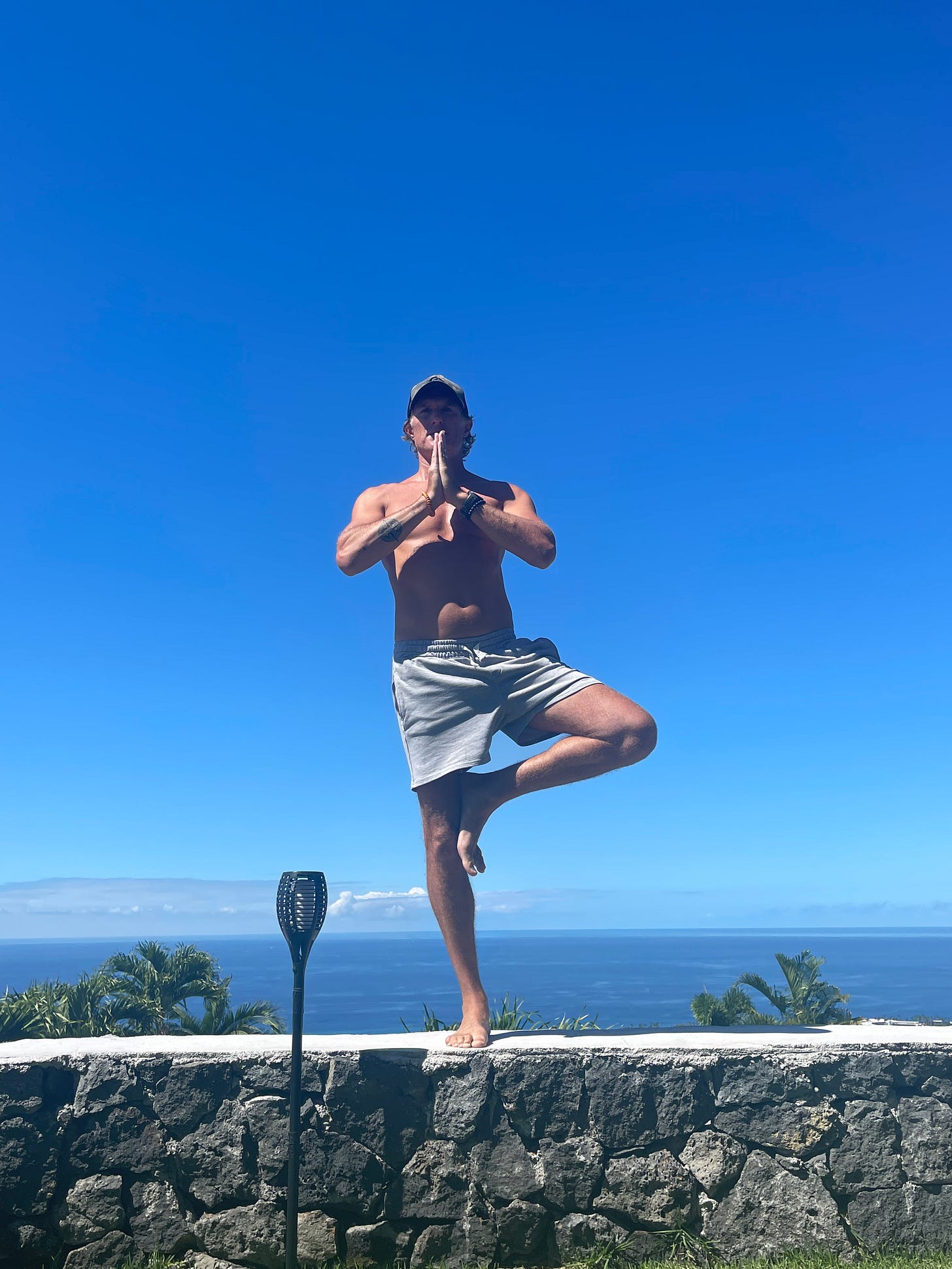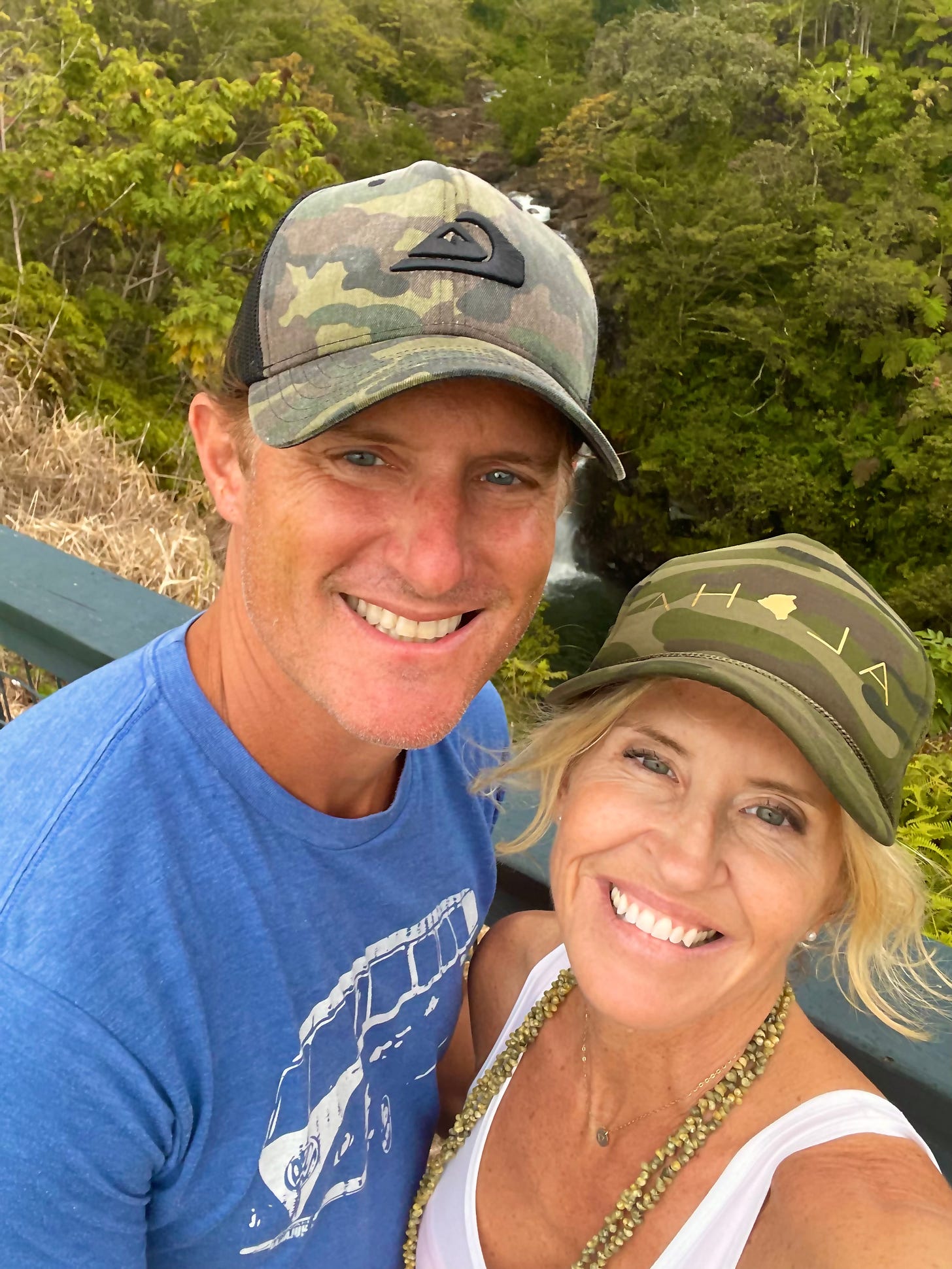Her Triggers Weren't the Problem - My Reactions Were
4 Phases That Shifted Me From Denial to Empathy
By: Travis Francis
Summary:
I used to think I had to be the strong one in our marriage.
I thought I had it all together — and that Kristin’s emotions were the problem.
Then came the Complex PTSD diagnosis.
What followed wasn’t easy. There were four distinct phases — each one forcing me to unlearn what I thought strength, love, and support really meant.
Here’s what happened when I finally stopped resisting her healing… and started doing my own.
I wish I could say I always understood what my wife was going through.
But I didn’t.
Not when she struggled after giving birth.
Not when she became overwhelmed or shut down emotionally.
Not when our house felt like chaos and I blamed it all on her.
It took years—and four distinct phases—for me to understand how much Complex PTSD was shaping our lives, and how much I was unintentionally making it worse.
😤 Phase 1: The Blame Years
(Before we had any language for what was happening)
Before Kristin was diagnosed in 2019, I didn’t understand what Complex PTSD was. Honestly, I barely understood ADHD—and that’s something both my wife and son had already been diagnosed with. Back then, I didn’t believe in mental health issues. I thought it was all just excuses or laziness.
So when Kristin had emotional reactions that didn’t make sense to me, I took it personally.
I yelled. I shamed. I judged.
I told her to "just stop being so emotional."
I remember when she became addicted to opioids after giving birth—how instead of supporting her, I blamed her. No empathy, no understanding. Just anger. And I was angry about everything:
My dad was dying of cancer.
Our business was failing.
We had three young boys and a house that felt like it was crumbling.
I was drowning, and I lashed out at the person who needed me most.
I saw myself as the stable one, the “logical” one—but the truth is, I was emotionally clueless. I had no idea how to support my wife. I started going to therapy around that time, but all I did was vent about everyone else. I didn’t do the work. I didn’t take ownership. I didn’t know how.
🧨 Phase 2: The Diagnosis—and the Emotional Floodgates
(We had a name for it, but no idea what to do with it)
In the spring of 2019, Kristin started with a new therapist — and everything changed. That’s when she was diagnosed with Complex PTSD, a term I had never even heard before.
At first, I didn’t fully understand what the diagnosis meant — but I could feel something shifting. She began coming home from sessions more emotional than ever, but in a different way. She told me she was starting to remember things from her past. Buried memories. Trauma. Things her brain had protected her from for decades.
I was confused. Scared. And honestly, still selfish.
I didn’t understand how someone could forget trauma—and I was mad at her for not telling me sooner. Like it was her fault that her brain hid those things.
I kept going to therapy, but I still only talked about how all of this was affecting me. Kristin, meanwhile, was doing deep trauma work with EMDR—processing things that had been locked away since childhood. The triggers became constant: smells, street names, even songs. And I had no tools to help her through it. I just kept trying to shut her down: “Can’t you just stop?”
But Complex PTSD doesn’t work like that.
And at the time, I thought it was something only soldiers got. I didn’t know it could show up in a wife, a mother, a childhood abuse survivor.
🌊 Phase 3: The Wake-Up Call
(Moving to Hawaii and finally learning what healing actually takes)
By the end of 2020, we were exhausted. COVID had intensified everything. Kristin was working so hard on her healing, but it felt like we were getting eaten alive by the diagnosis. When she started sharing with family and close friends about her past, the responses were… underwhelming. Confused. Dismissive. Silent.
I judged them at first—why didn’t they show up? Why didn’t they ask how she was doing?
But then I realized: they were just like me.
I had done the exact same thing for years.
Later that year, we made the biggest decision of our lives—we moved our family to Hawaii to focus on healing.
Kristin found a therapist she trusted. I found a men’s coach who flipped my world upside down. For the first time, I saw my patterns. My blame. My control. My defensiveness. I realized how much I had contributed to the pain in our relationship—and how much had to change if we were going to make it.
I started learning everything I could about Complex PTSD.
Books. Podcasts. Nervous system tools. Trauma responses.
Not because I had to—but because I wanted to become the kind of partner who could actually support my wife.
Kristin needed me to be stronger than I’d ever been—not emotionally numb, but emotionally safe.
Not controlling, but steady.
And it wasn’t just about her.
The more I healed, the better father I became.
The better man.
The better me.
🌿 Phase 4: The Calm After the Storm
(When healing becomes part of your lifestyle)
Today, our home is calmer. Not perfect, but regulated. There’s space now—for joy, for emotions, for hard conversations.
Complex PTSD didn’t go away. But it stopped being a mystery. We have language. We have tools. We have ownership.
Most of all—we have each other.
Looking back, I didn’t just misunderstand Kristin. I misunderstood myself. I thought I had to fix everything. Stay in control. Power through. But none of that helped her. None of that helped us.
What helped was slowing down. Listening. Learning. Regulating myself so I could be a safe place for the woman I love—and for our kids.
Healing didn’t happen overnight. It’s taken years of showing up every day. But what changed everything wasn’t just Kristin getting diagnosed. It was me deciding to stop resisting the diagnosis—and start learning how to love her through it.
That decision?
It saved our marriage.
And it changed my life.
This is the first in a series of personal reflections from my perspective as a partner walking beside someone with Complex PTSD.
I really hope these words help someone else feel a little less alone.
🌟 Next Tuesday:
We’re kicking off our brand-new Rewired Healing Series with:
“Creating Safety: What to Avoid in Early Healing.”
We’ll break down the biggest mistakes we made early on — with personal stories, grounding practices, and a guided worksheet to help you reflect and apply what you’re learning.
If you’re a partner, parent, or just starting to understand Complex PTSD… this one’s for you.
♥️ If this post resonated with you — or made you feel seen — we’d love to have you stick around.
Free subscribers receive weekly educational posts and grounding tools to help you begin.
Paid subscribers receive extended content, deeper guidance, exclusive tools, curated downloadable worksheets designed to support your healing more holistically - and FULL access to Our Rewired Healing Series.
No pressure — just extra support if and when you need it.
📌 About Us:
We’re Kristin & Travis Francis — founders of Complex PTSD Warrior. We provide trauma-informed education & support for healing your nervous system, repairing relationships, and breaking generational cycles — with curated tools based in neuroscience & lived C-PTSD experience
Our mission is to spread Complex PTSD Awareness, Education & Tools around the world.
If this post helped you feel seen, understood, or less alone — we’d be so grateful if you’d share it with someone who might need it too.
It could be the message they’ve been waiting their whole life to hear.







Wow, you described our journey perfectly. This year is the year I finally understood how important it is for me to slow down for my CPTSD husband.
Powerful stuff! Right here! Read it!